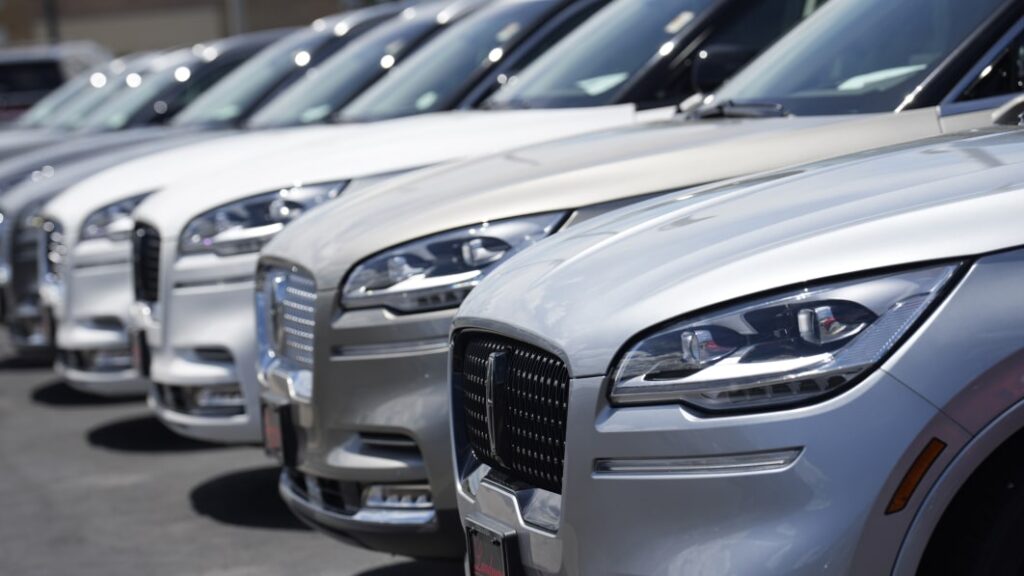July inflation report: New and used car prices keep falling

New and used car prices are continuing to drop, according to the latest government inflation data released Wednesday morning. The bottom line? Consumers may soon be buying more cars.
For the month of July, consumer prices for new autos were down 0.1% compared to June (though up 3.5% year over year, with the yearly figure coming down considerably compared to the prior month’s 4.1%). The used car market saw even more moderation, with prices down 1.3% for the month of July alone, and dropping 5.6% year over year. Both of those figures for the used car market fell again for a second month in a row.
Car prices, in particular for used vehicles, seem to be coming down faster compared to inflation in the broader economy, which saw overall CPI rise 3.2% in July year over year, but up 0.2% month over month. That was below analyst expectations of 3.3%, but more than the June’s 3%.
Used vehicle trends are also coming down at the wholesale auction market, which tracks overall trends that are a precursor to what will be seen at the retail level.
Manheim’s Used Vehicle Value Index, which tracks the auction market, finds used vehicle prices fell 1.6% in July, and were down a whopping 11.6% year over year. In fact, Manheim’s data showed July marked the 12th month in a row that the index fell compared to a year ago.
But the story in the used market may not be so simple.
“The July drop of 1.6% is an indicator of slowing wholesale price declines, at least when compared to the month-over-month losses we’ve seen since April,” said Chris Frey, senior manager of economic and industry insights for Cox Automotive.
The used market did see a momentary hike of prices during the spring buying season, which is generally fueled by tax refunds. But it is now back to trending lower, though prices may be moderating at the wholesale level.
The big year-over-year drops in used car prices, while a positive sign for consumers, must again be put into the context of the massive price gains following the pandemic.
“From July 2020, there were 22 straight monthly double-digit increases through April 2022; we’ve had just six double-digit declines since October last year, with only four of them consecutive,” Frey said.
Still, this is translating to more buying on the retail level. Manheim’s retail buying estimates show used-vehicle retail sales in July were up 6% compared to June, and the year-over-year comparison is beginning to improve as well.
And NADA (National Automobile Dealers Association), which tracks new car sales at the dealer level, finds that new car sales were up a whopping 18.3% in July compared to a year ago, with the group noting rising inventories have led to more manufacturer incentives, which along with decreasing prices are driving sales.
But … insurance costs keep rising
It’s not all good news for car buyers, however. The cost of motor vehicle insurance has been rising, up 2.0% in the month of July, and up 1.7% in the prior month.
The year-over-year measurements are more staggering. Motor vehicle insurance jumped a whopping 17.8% in July compared to a year ago, one of the biggest factors, other than shelter, that boosted prices in the month.
Factors contributing to the rise in motor insurance rates: an increase in the number of accidents since the pandemic began in 2020 due to more driving (and more fatal accidents), and the rising complexity of cars and car technology, which is resulting in car repair costs increasing as well. In fact, motor vehicle repair costs in the month of July rose 12.7% year over year, and 1% month over month.
More Yahoo Finance inflation coverage:
Pras Subramanian is a reporter for Yahoo Finance. You can follow him on Twitter and on Instagram.
Click here for the latest stock market news and in-depth analysis, including events that move stocks
Read the latest financial and business news from Yahoo Finance







